27 – Accepting the Armistice conditions
At noon on Wednesday November 13th, Admiral Beatty received a message that Vice-Admiral Meurer would act as negotiator for the German navy.
On Friday 15th November 1918 the light cruiser SMS Konigsberg was escorted into the Forth by HMS Cardiff, and Meurer transferred to Beatty’s flagship HMS Queen Elizabeth.
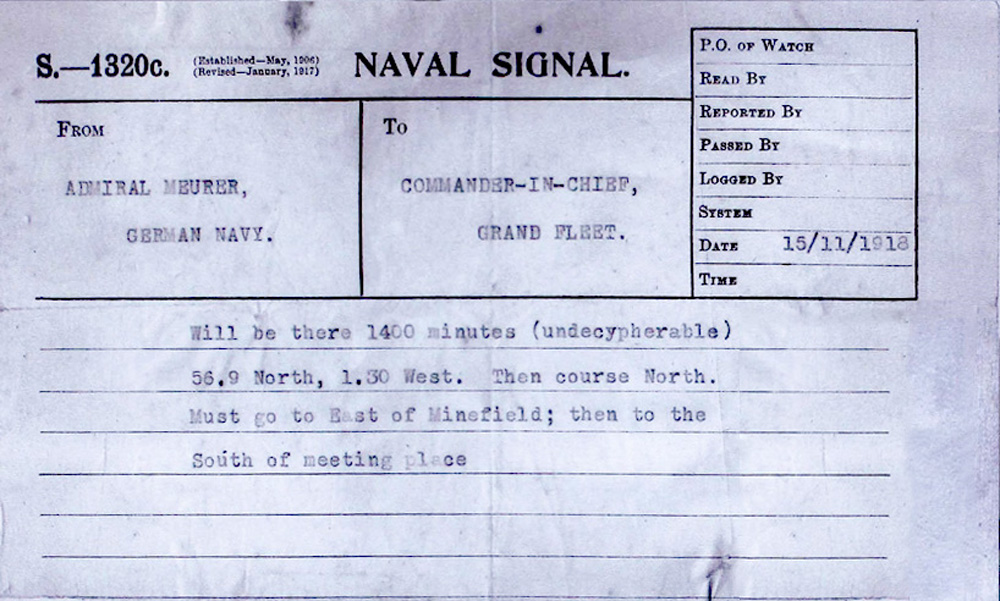


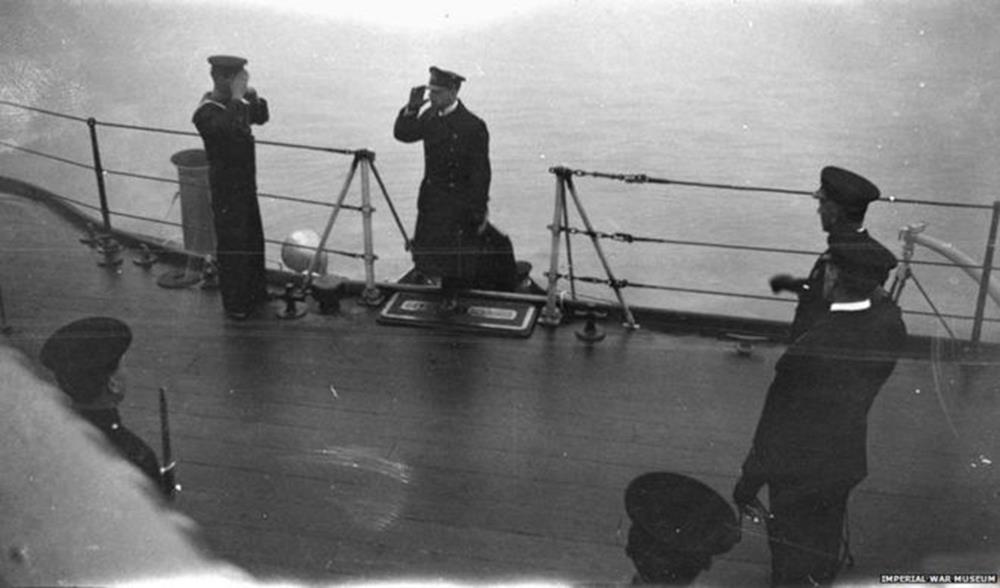
Admiral Meurer steps on board HMS Queen Elizabeth
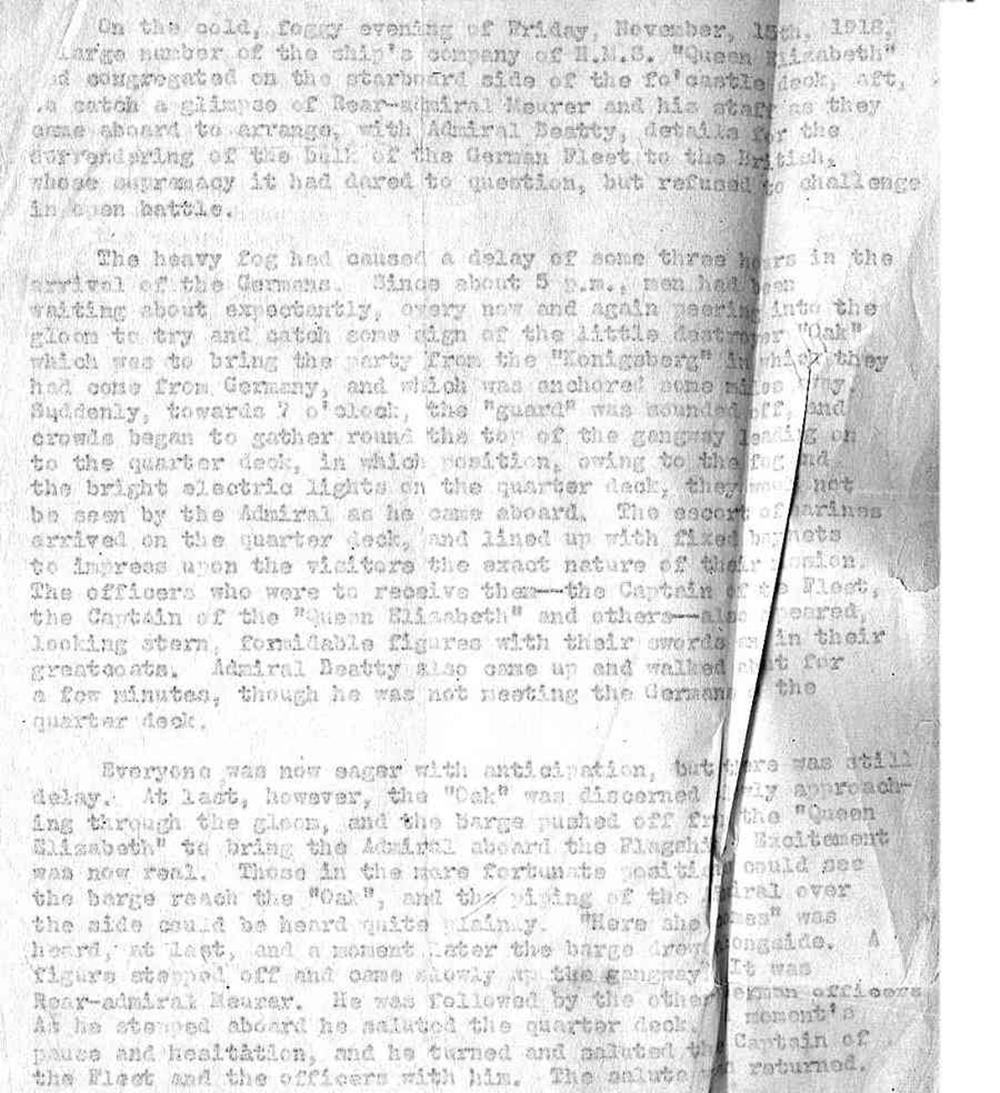
On the cold foggy evening of Friday November 15th 1918, a large number of the ship’s company of H.M.S. “Queen Elizabeth” had gathered on the starboard side of the fo’castle deck. aft, to catch a glimpse of Rear-admiral Meurer and his staff as they came aboard to arrange, with Admiral Beatty, details for the surrendering of the bulk of the German Fleet to the British, whose supremacy it had dared to question, but refused to challenge in open battle.
The heavy fog had caused a delay of some three hours in the arrival of the Germans. Since about 5 p.m. men had been waiting about expectantly, every now and again peering into the gloom to try to catch some sign of the little destroyer “Oak” which was to bring the party from the “Konigsberg” in which they had come from Germany and which was anchored some miles away. Suddenly, towards 7 o’clock, the “guard” was sounded off, and crowds began to gather round the top of the gangway leading on to the quarter deck, in which position, owing to the fog and the bright electric light on the quarter deck, they would not
be seen by the Admiral as he came aboard. The escort of marines arrived on the quarter deck, and lined up with fixed bayonets
to impress upon the visitors the exact nature of their mission. The officers who were to receive them – the Captain of the Fleet, the Captain of the “Queen Elizabeth” and others – also appeared looking stern, formidable figures with their swords on in their greatcoats. Admiral Beatty also came up and walked about for a few minutes, though he was not meeting the Germans on the quarter deck.
Everyone was now eager with anticipation, but there was still delay. At last, however, the “Oak” was discerned slowly approaching through the gloom, and the barge pushed off from the “Queen Elizabeth” to bring the Admiral aboard the Flagship. Excitement was now real. Those in the more fortunate positions could see the barge reach the “Oak”, and the piping of the guard over the side could be heard quite plainly. “Hear she comes” was heard at last, and a moment later the barge drew alongside. A figure stepped off and came slowly up the gangway. It was Rear admiral Meurer. He was followed by the other German officers. As he stepped aboard he saluted the quarter-deck. A moment’s pause and hesitation, and he turned and saluted the Captain of the Fleet and the officers with him. The salute was returned.
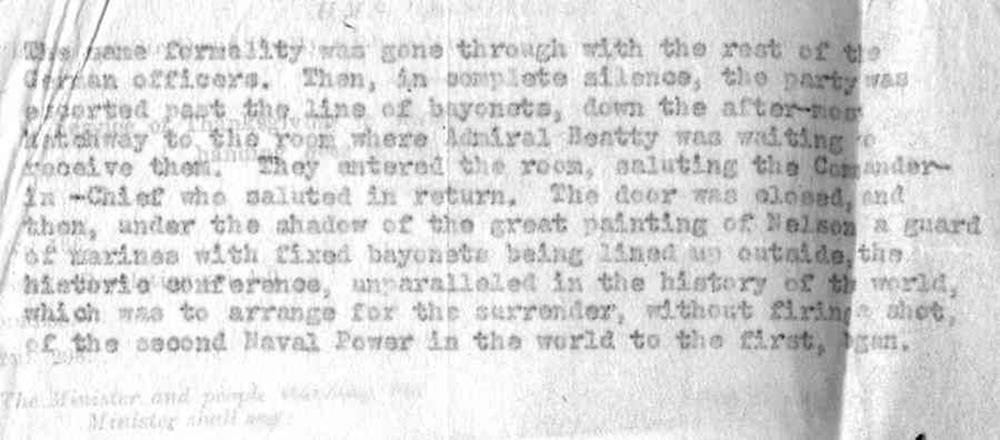
The same formality was gone through with the rest of the German officers. Then, in complete silence, the party was escorted past the line of bayonets, down the after-mess hatchway to the room where Admiral Beatty was waiting to receive them. They entered the room, saluting the Commander-in-Chief who saluted in return. The door was closed, and then, under the shadow of the great painting of Nelson a guard of marines with fixed bayonets being lined up outside, the historic conference, unparalleled in the history of the world, which was to arrange for the surrender, without firing a shot, of the second Naval Power in the world to the first, began.
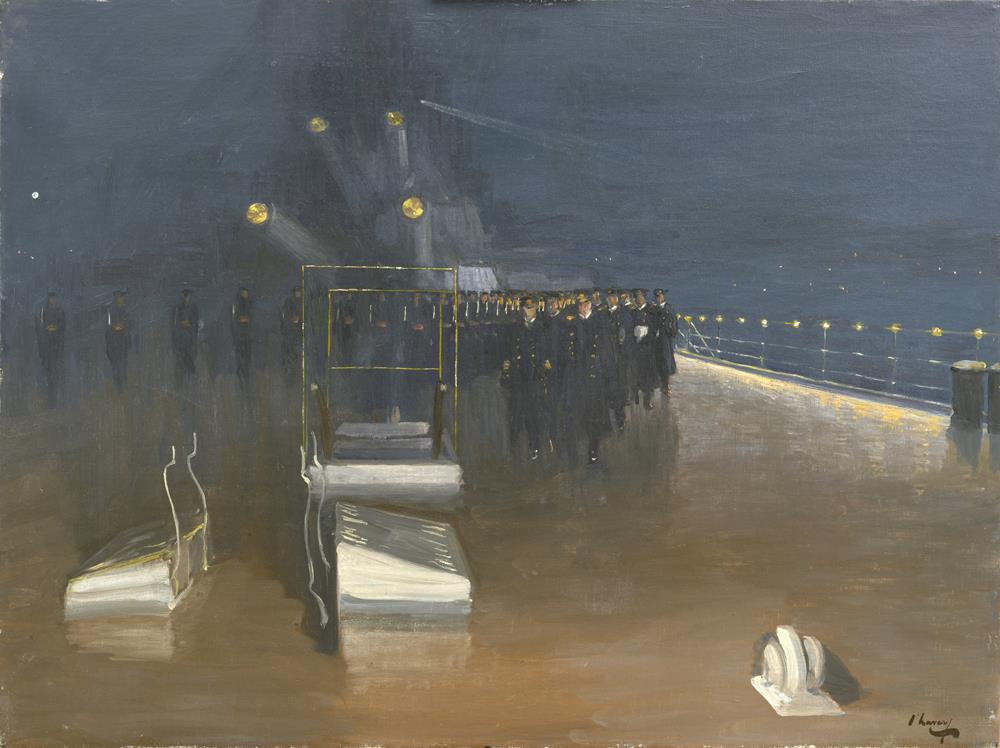
The Arrival of the German Delegates – painting by Sir John Lavery
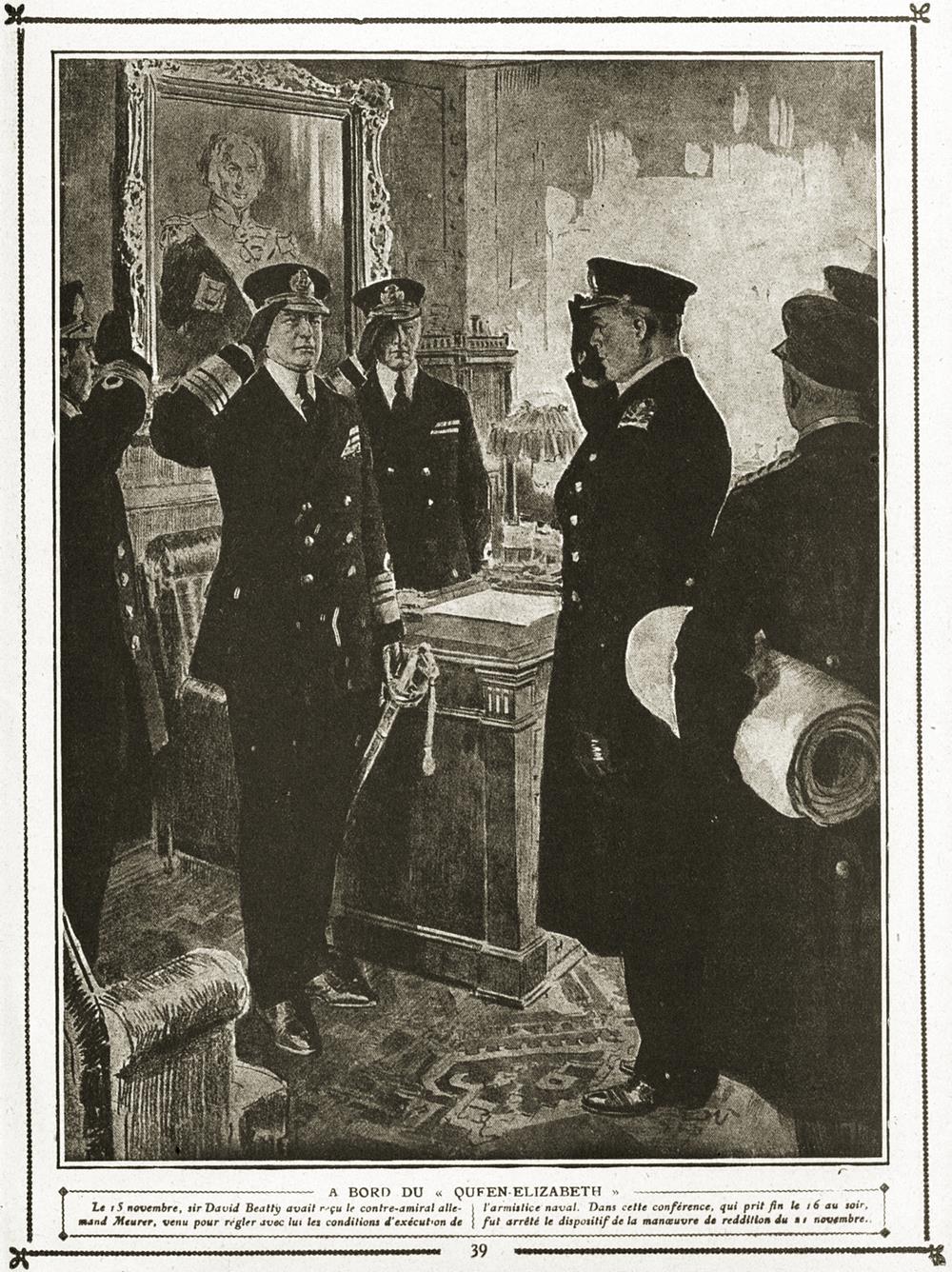
Meurer was presented with a surrender document. One column listed the Armistice conditions, the second column listed questions he was to answer and orders with which he was to comply. These covered details of the ships to be surrendered, where they would rendezvous, supplies and fuel they could carry, how the crew would be returned, and where the ships would be interned. The ships were to be completely unarmed.

The End – the fore-cabin of HMS Queen Elizabeth with Admiral Beatty reading the terms of the surrender of the German Navy, Rosyth, 16th November 1918 painting by Sir John Lavery.
Once agreement was reached, Meurer sailed back to Germany on Saturday 16th November.
(SMS Konigsberg was not included in the surrender list, instead she was ceded to France in 1920.)
| < 26 – Celebrating the Armistice |
| Δ Index |
| 28 – Submarine surrender at Harwich > |
top of page
